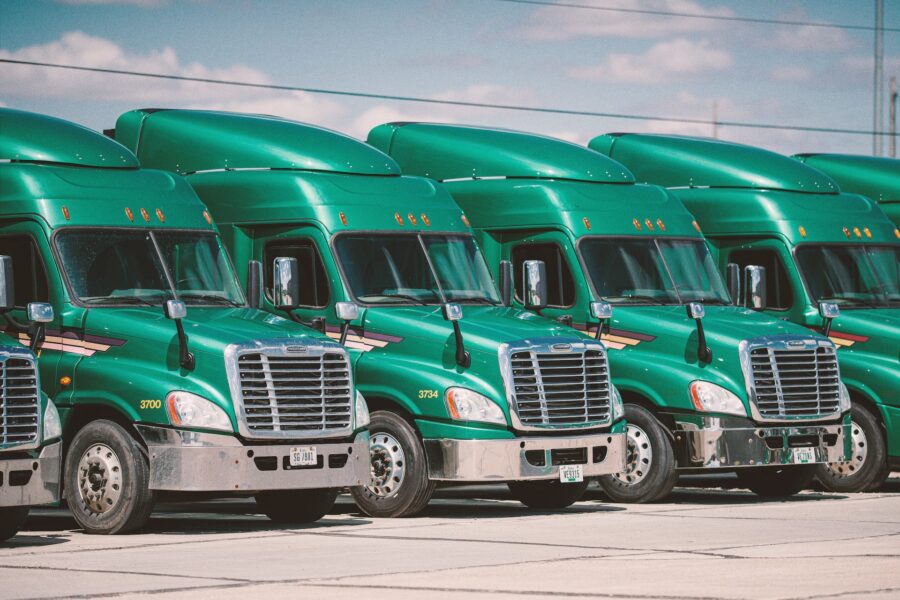
Global supply chains remain in crisis after several national and international events. However, a massive truck driver shortage is a significant cause of delays and missed deliveries. Many companies are turning to automated trucks to solve this problem, but are they the key to supply chain issues?
Pros of Self-Driving Trucks for the Supply Chain
There are significant positives to introducing self-driving trucks to the supply chain.
Safety
One of the top benefits of automated trucks is safety. Though businesses are still evaluating and mitigating risks, they could be the key to preventing the thousands of accidents involving commercial trucks that happen each year.
Trucking companies must balance delivery needs with the vital role of protecting their drivers. Sleep is a problem for truck drivers and the current shortage leads to increased pressure to meet delivery deadlines. To get enough sleep to safely drive, they have to rush, which can lead to poor decision-making and accidents.
If not, they drive while fatigued, which also increases accident risk. Manufacturers program self-driving trucks to stay in the right-hand lane and go the speed limit, reducing risky maneuvers. The trucks are predictable and other drivers can feel confident they will not pull out in front of them or travel too fast.
Time
Since human exhaustion is not a consideration with these trucks, they can be on the road for much longer. With a struggling supply chain and consumers relying on fast deliveries, these automated vehicles may be a top benefit. Without human needs, they can go directly from point A to point B and take advantage of lower traffic times, like the middle of the night when drivers would typically be too exhausted to continue their route safely.
Efficiency
The speed-controlled benefits of automated trucks also make them more efficient. Though drivers may work to stay at a consistent speed, it is easier for self-driving computers to control it.
Companies with efficient vehicles can reduce their impact on climate change. They can meet efficiency goals while having more trucks on the road simultaneously.
Cons of Self-Driving Trucks for the Supply Chain
While there are potential solid positives to introducing automated trucks, concerns surrounding their introduction and prolonged use exist.
Safety
There are many safety benefits to these trucks, but problems still need addressing before calling them sufficiently safe. Automated vehicles run on a computer system, which can have glitches or even fail. A scary incident in 2022 highlighted the potential problems with these trucks.
A system failure led to one traveling across lanes haphazardly and crashing into a barrier. Thankfully, the crash did not cause injuries to surrounding passengers, but it shows there is still a long way to go in perfecting this technology. This accident is not an isolated incident and shows the hazards fleets of self-driving trucks would cause without making changes.
There are also navigation system concerns. While they should stay in the right-hand lane, predicting every scenario the computers need to cover is near-impossible. Driving is unpredictable — sometimes, split-second decisions are necessary. There are safer, more convenient options without relying on placing automated trucks on public roadways.
Price
Automated trucks are expensive, but upgrading a still-functional fleet can save time and money. Most of these trucks cost more than $250,000, while conventional models typically cost around $150,000. This huge price difference can make it harder for companies to afford an entire delivery fleet, negating the supply chain advantages of automation.
Jobs
There’s no question that introducing self-driving trucks will eliminate the need for drivers. While there is currently a significant shortage of drivers, there is still a large number of dedicated, unemployed workers.
Many employees fear what automated processes will do to their jobs, making the drivers hesitant to stay in the industry. When a company does not have enough human employees, it is harder to cross-correct when errors happen, slowing down the supply chain. Humans created software that automates vehicles and a lack of jobs can prevent necessary personnel from jumping into action when things go wrong.
Conclusion
These trucks are game-changing for the businesses using them, creating smoother and faster deliveries and improving the supply chain. However, innovators must address particular aspects before moving forward with automated fleets.
